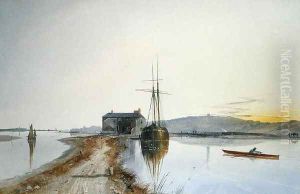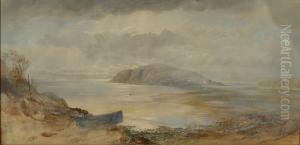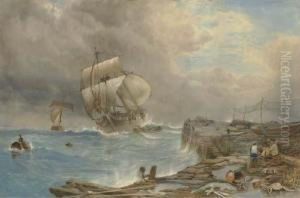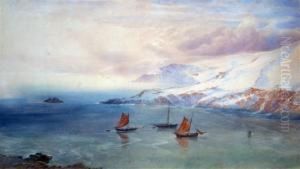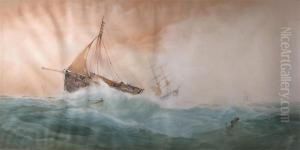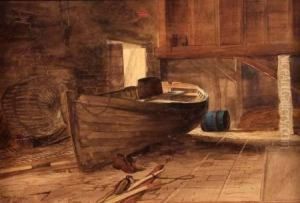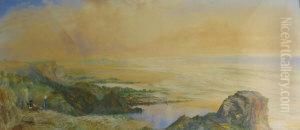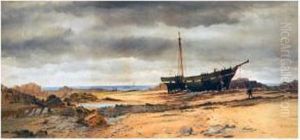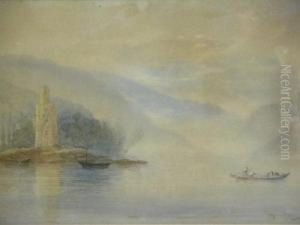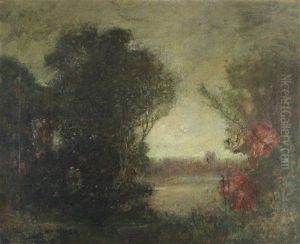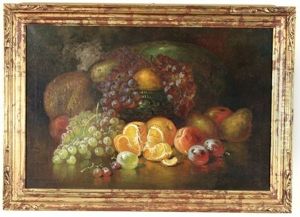George Whitaker Paintings
George Whitaker was an American artist born in Fall River, Massachusetts, in 1840. He is best known for his landscape paintings, which often depicted the New England countryside. Whitaker's artistic journey began at an early age, and he went on to study at the Providence Art Club, one of the oldest art clubs in the United States. His education continued in Europe, where he was particularly influenced by the Barbizon School, a group of French painters who embraced plein air painting and naturalism.
After his studies in Europe, Whitaker returned to the United States and became an influential figure in the Rhode Island art scene. He was a founding member of the Providence Water Color Club and served as the first president of the Providence Art Club, helping to foster a burgeoning art community in the region. Throughout his career, Whitaker exhibited his work at various galleries and institutions, earning recognition and accolades for his contribution to American art.
George Whitaker's paintings are characterized by their soft, muted tones and serene depictions of the natural world. He captured the changing seasons, rural landscapes, and coastal scenes with a sense of tranquility and poetic beauty. His work resonated with the American public, who found solace and national pride in his paintings during a time of rapid industrialization and urban growth.
Whitaker's legacy as an artist is preserved through his works, which are held in numerous collections and have been displayed in exhibitions posthumously. He passed away in 1916, leaving behind a body of work that continues to be appreciated for its quiet elegance and representation of 19th-century American landscape painting.
